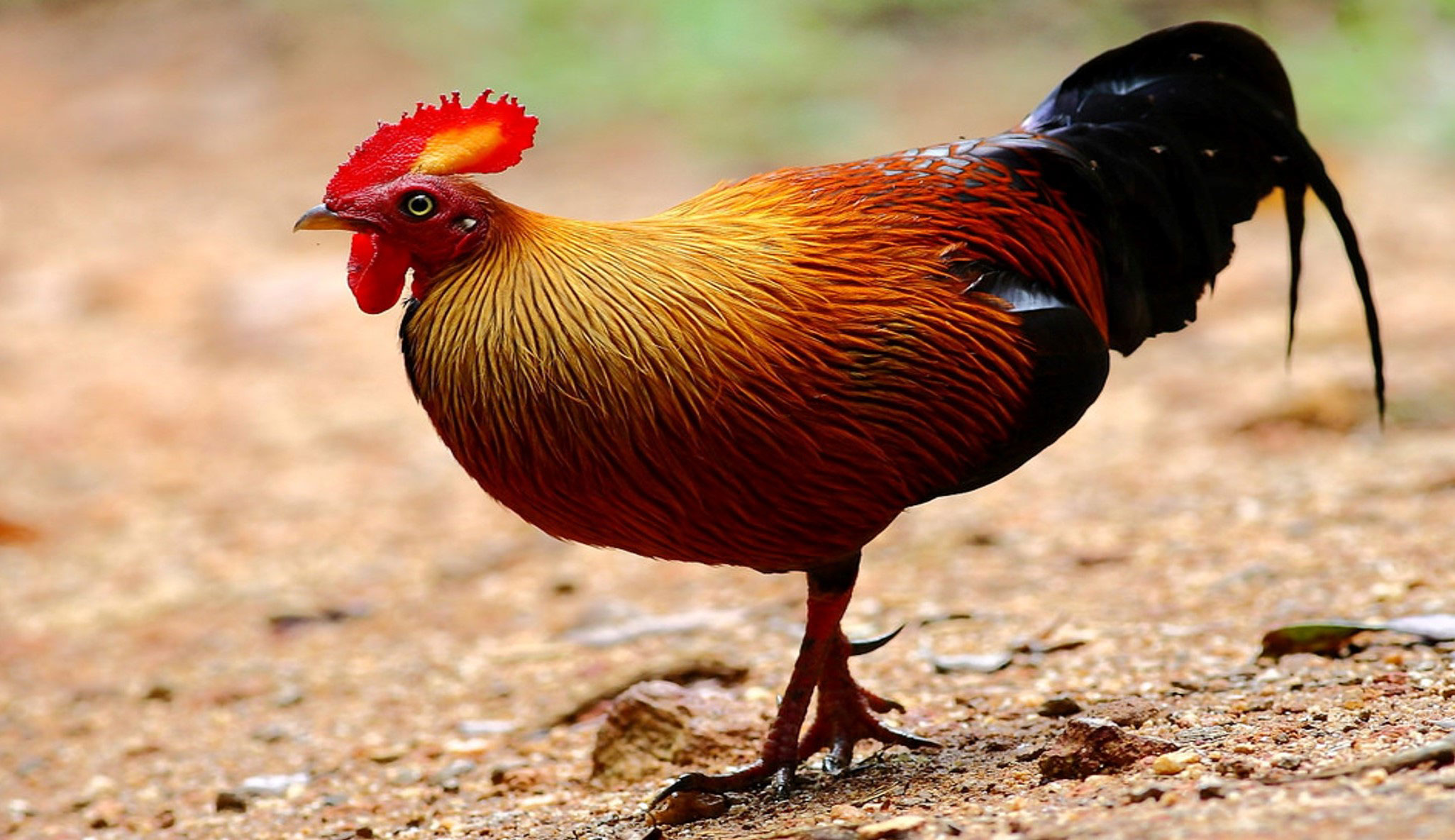Roaming the verdant jungles and forested landscapes of Sri Lanka is the magnificent Sri Lankan Junglefowl, proudly recognized as the national bird of this island nation. With its vibrant plumage and distinctive features, the Sri Lankan Junglefowl holds a special place in the hearts of Sri Lankans and captivates the fascination of birdwatchers and nature enthusiasts worldwide. Let’s delve into the fascinating world of this colorful avian resident, exploring its characteristics, habitat, and significance in Sri Lanka’s cultural heritage.
Characteristics of the Sri Lankan Junglefowl
The Sri Lankan Junglefowl (Gallus lafayettii) is a striking bird characterized by its radiant plumage and regal appearance. The male, or rooster, boasts vibrant hues of red, orange, and gold on its head and neck, which beautifully contrast with its glossy black plumage. Its long, sweeping tail feathers add an air of elegance, making it an exquisite sight to behold. The female, or hen, has a more subdued appearance, featuring mottled brown feathers that provide excellent camouflage amidst the jungle foliage.
Habitat and Distribution
As the name suggests, the Sri Lankan Junglefowl thrives in the lush jungles and dense forests that cover various regions of Sri Lanka. From the lowland rainforests to the higher elevation mountain ranges, this elusive bird has adapted to a diverse range of habitats. Despite its natural habitat being primarily on the island, it has also been introduced to other regions, including the Andaman and Nicobar Islands in the Indian Ocean.
Behavior and Vocalizations
The Sri Lankan Junglefowl is primarily a ground-dwelling bird, using its strong legs and powerful wings only when necessary. It is known for its distinctive call, a resonant “kukkuk-kuk-kuk” that echoes through the jungle, often signaling the break of dawn. The male is particularly vocal during the mating season, as it asserts its dominance and attracts potential mates with its proud crowing.
Cultural Significance
Beyond its biological significance, the Sri Lankan Junglefowl holds a prominent place in Sri Lanka’s cultural heritage. Its proud and elegant demeanor has inspired various aspects of traditional art, dance, and folklore. The bird’s image adorns ancient paintings, traditional textiles, and even currency notes, reflecting its deep-rooted significance in the country’s cultural identity.
The Legend of the Junglefowl and Old Sri Lanka’s Flag
According to Sri Lankan folklore, the Sri Lankan Junglefowl played a crucial role in the country’s ancient history. Legend has it that the bird was instrumental in helping the Sinhalese prince, Vijaya, establish the first Sinhalese kingdom on the island. Today, the image of the Sri Lankan Junglefowl can be found on the country’s national emblem and the old Sri Lankan district flag, symbolizing pride, bravery, and resilience.
Conservation Status and Threats
While the Sri Lankan Junglefowl remains a revered symbol in Sri Lanka, its population faces various conservation challenges. Habitat loss due to deforestation, human encroachment, and agricultural expansion pose significant threats to its natural habitat. Additionally, poaching and illegal wildlife trade also contribute to the decline of its numbers. As a result, the Sri Lankan Junglefowl is listed as a species of least concern on the IUCN Red List of Threatened Species, emphasizing the need for continued conservation efforts.
The Joy of Birdwatching
For birdwatchers and nature enthusiasts, encountering the Sri Lankan Junglefowl in its natural habitat is a moment of sheer delight. The thrill of observing these splendid creatures amidst the dense foliage of Sri Lanka’s jungles leaves a lasting impression, instilling a sense of wonder and appreciation for the island’s rich biodiversity.
Conclusion – A Symbol of Natural Beauty
The Sri Lankan Junglefowl stands as a symbol of natural beauty and cultural pride in the tropical paradise of Sri Lanka. Its resplendent colors, majestic presence, and cultural significance make it a cherished resident of the island’s diverse landscapes. Preserving the habitat and ensuring the protection of this regal bird is not only a testament to Sri Lanka’s commitment to conservation but also a tribute to the vibrant spirit of this enchanting national bird.
